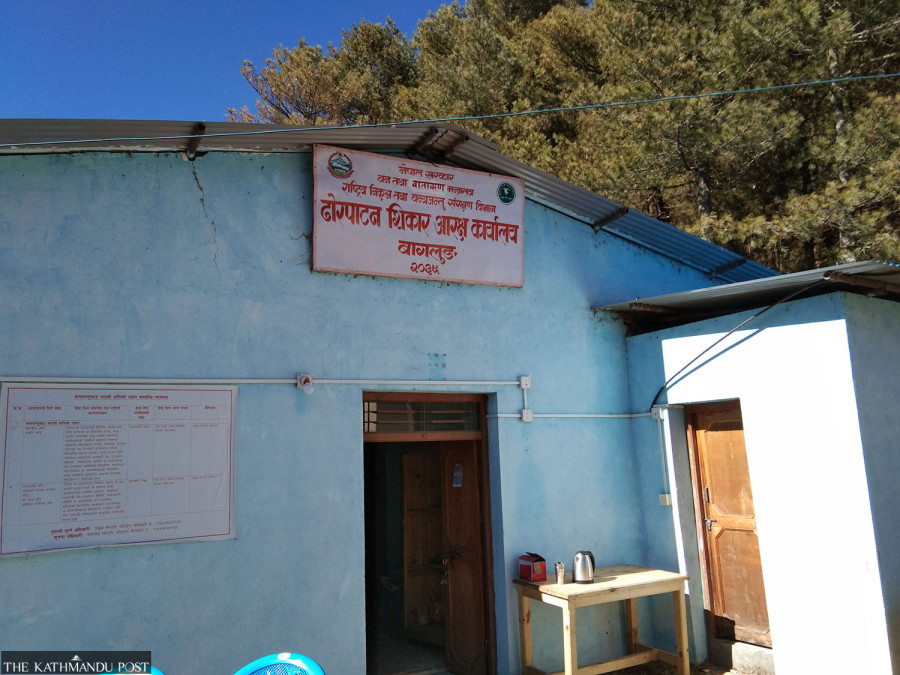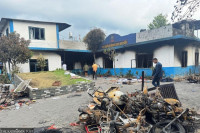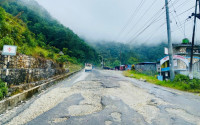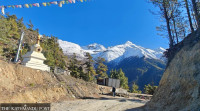Gandaki Province
Dhorpatan Hunting Reserve sees decline in blue sheep population
Census conducted two months ago put the animal’s number at 1,290, a dip from 2,202 five years ago.
Prakash Baral
The number of Himalayan blue sheep has decreased at Dhorpatan Hunting Reserve. According to the census carried out two months ago, there are 1,290 Himalayan blue sheep in the reserve, a drastic decrease from 2,202 five years ago.
The reserve carries out a census of Himalayan blue sheep every five years. This year’s census, which was conducted under the leadership of the Department of National Parks and Wildlife Conservation, took place from mid-March to mid-May when some herds had moved to the highlands seeking cooler clime. This could have affected the total calculation, says Birendra Kandel, chief conservation officer of the Reserve.
However, the difference in number is too high to be attributed to the migration of sheep to the upper regions, he says.
“We usually attribute a slight decrease in numbers to technical issues while conducting the census,” said Kandel. “But to have the number go down by almost half in five years is shocking and can only be explained as a consequence of illegal activities inside the reserve.”
According to him, incidents of poaching and illegal hunting have increased inside the reserve in the last few years.
“Some calculations are based on speculation as there are areas where enumerators cannot reach,” said Kandel. “The weather was also unfavourable two months ago with the region witnessing plenty of avalanches. We may have lost some herds to avalanches in the mountainous region of Dhorpatan.”
According to the Reserve office, the census team observed that a lot of sheep looked frail and suspected they may have caught some disease which could have led to the death of some sheep from the herds.
“We don’t have the exact data on the number of sheep we lost to diseases and avalanches. But during the census, we found more than 20 sheep buried in the snow,” Assistant Conservation Officer Surya Khadka told the Post.
Khadka too believes that the main factor behind the sharp decline in the sheep’s population in the reserve is illegal hunting and poaching.
“The locals here are likely to hunt. Several people have been arrested with illegal weapons during house searches by the reserve and the army. Most of the weapons recovered were of armed forces standards specially used by the army,” said Khadka
The Dhorpatan Hunting Reserve sprawls over 1,325 sq km in the Dhaulagiri Himal range of Baglung, Myagdi and Rukum (East) districts. Established in 1983 and gazetted four years later, the reserve is home to 32 species of mammals and 130 bird species.
The Nepal Army is responsible for providing security in the hunting reserve area but Reserve officials say that the number of army personnel deployed in the area for security is not enough to keep poachers and illegal hunters away.
According to the Reserve, there is security presence only at Patan, Phagune, Togadi and Gurja, where the reserve offices are located.
“We asked for an entire battalion for security but we have not received it. If we had proper security in place, we could do more to conserve wildlife in the reserve,” said Kandel. “The reserve office is also facing a shortage of employees. It has a total of 72 posts in various levels, out of which 47 are currently vacant,” said Kandel.
In Dhorpatan, after the census in 2016, permission was given to hunt 19 to 24 Himalayan blue sheep annually. The Department of National Parks and Wildlife Conservation determines the quota for hunting the blue sheep on the basis of their number after the census.
“Hunting quota is determined after studying the animal’s numbers and fertility. This time the number of Himalayan blue sheep is low so the hunting quota has also been reduced,” said Khadka. “Permission has been given to hunt only 19 sheep per annum.”




 12.12°C Kathmandu
12.12°C Kathmandu.jpg)








%20(1).jpg&w=300&height=200)

